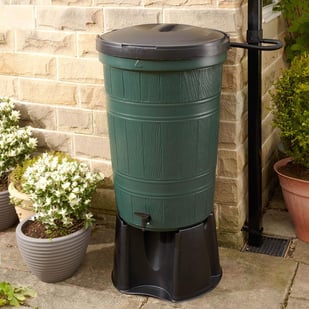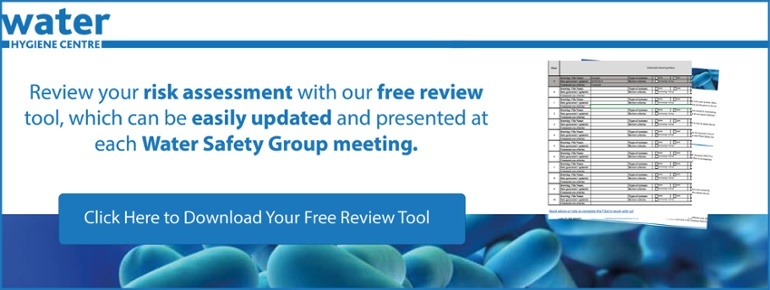In today’s world people are trying to save money, lead healthier lifestyles, eat healthier foods and be more active. Many people take pride in their gardens and use gardening to help with healthier lifestyles by growing their own healthy foods and enjoying the fresh smell of flowers.
Can gardening equipment harbour Legionella?
Leading up to the summer months, many gardeners think about saving rainwater for their garden’s thirstiest months. It is a little-known issue, but neglect and misuse of our gardening equipment can represent health risks in the form of waterborne bacteria and diseases. Water butts, hose pipes, ponds and even compost can all harbour harmful levels of bacteria if not looked after correctly.
In this blog, we look at some of the issues with gardening equipment and other devices used/found in the garden and what might be done to reduce the risk of exposure to soil and waterborne bacteria.
Why is it important to regularly maintain your gardening equipment?
There is a plethora of soil and waterborne bacteria, one type of bacteria is ‘Legionella’. Exposure to Legionella can cause Legionnaires’ disease. In recent times, there have been reported cases of Legionnaires’ disease linked with gardening activities, for example;
- Between 2008 and 2013, 16 people in Scotland contracted Legionnaires’ disease from compost. 2 of these cases were fatal.
- A 63-year-old gardener from Norfolk contracted Legionnaires’ disease and sadly died, they had been exposed to the Legionella after using a hose pipe.
- RHS - Minimising health risks in the garden.
- The Times - Gardeners using water butts risk spreading legionella germ.
- The Guardian - Dr Dillner's health dilemmas: can you catch legionella when gardening?
- The Telegraph - Hygiene warning to gardeners after study finds Legionella in compost.
Articles like these demonstrate the potentially catastrophic consequences of failing to properly manage and understand the risk of Legionella bacteria. Making sure the public is aware of Legionella risk and the control measures available will go a long way to potentially reducing the risks they may be exposing themselves to whilst enjoying their gardens.
What types of Legionella can be found in gardening equipment?
With all gardening-related activities, there are 2 types of Legionella bacteria that have been reported within the UK;
- Legionella longbeachae – this is not common but can be found in potting mixes, compost heaps and composted animal manures. Respiratory disease can develop after inhaling dust from contaminated compost;
 Legionella pneumophila – this is more common as the bacteria forms naturally in watercourses but will multiply in purpose-built water systems. Where these systems are allowed to stagnate or are slow moving, where sediment and scale are present, and where temperature of the water is between 20°C to 45°C, provides ideal conditions for waterborne pathogens to proliferate. Inhalation of water aerosols [sprays] is the route of infection. The source of which can be hoses/sprinklers, outside taps, hot tubs and water features/fountains. This type of bacteria accounts for 90% of Legionella cases in the UK.
Legionella pneumophila – this is more common as the bacteria forms naturally in watercourses but will multiply in purpose-built water systems. Where these systems are allowed to stagnate or are slow moving, where sediment and scale are present, and where temperature of the water is between 20°C to 45°C, provides ideal conditions for waterborne pathogens to proliferate. Inhalation of water aerosols [sprays] is the route of infection. The source of which can be hoses/sprinklers, outside taps, hot tubs and water features/fountains. This type of bacteria accounts for 90% of Legionella cases in the UK.
Who is most at risk from Legionella?
The Health and Safety Executive (HSE) have defined those with increased susceptibility to developing an illness caused by Legionella bacteria as;
- People over 45 years of age;
- Smokers and heavy drinkers;
- People suffering from chronic respiratory or kidney disease;
- Diabetes, lung and heart disease;
- Anyone with an impaired immune system.
The UK population is approx. 67 million, of which approx. 27 million people partake in gardening. What is the demographic of these gardeners…. many sources state that the typical gardener is female, aged 55+. The latter is most pertinent here when looking at susceptibility.
What control measures should be put in place to reduce Legionella risk in your garden?
For the avid gardeners out there, there’s no need to be disheartened, increased awareness of your surroundings and the risks present and by considering some simple control measures your biggest problem will be waiting for the dry spells to entertain your green fingers.
|
ITEM |
ISSUE |
CONTROL MEASURE CONSIDERATIONS |
|
Compost |
|
Read the health warnings printed on the side of bags of compost. Namely:
|
|
Hose Pipes & Flower Bed Irrigation Systems |
|
|
|
Water Butts |
|
|
|
Outside Taps |
|
|
|
Ponds |
|
|
|
Water Features |
|
|
|
Horticultural Misting Systems |
|
|
|
Spa Pools / Hot Tubs |
|
|
Conclusion

Gardeners should be aware of potential risks associated with gardening equipment/devices found/used in the garden.
Like any product, individuals should ‘always read the label’ for advice on how to operate, maintain and minimise any Legionella risks created by them i.e. warning label on the side of bags of compost.
Landlords and Dutyholders should also undertake a Legionella Risk Assessment to help minimise the potential risk. By increasing awareness of these risks and sharing of information we can all help to reduce the amount of exposure to Legionella, and beat the micro beasties lurking in our gardens!
Check out our FAQ page around Legionella, water hygiene, and waterborne pathogens
Feel free to reach out if you have any questions about this blog or if you would like to consult with one of our experts for further advice on water hygiene.
Editors Note: The information provided in this blog is correct at the date of original publication – May 2019 (Revised May 2024)
© Water Hygiene Centre 2024


.jpg?width=770&height=513&name=85%20-%20Garden-1%20(1).jpg)






